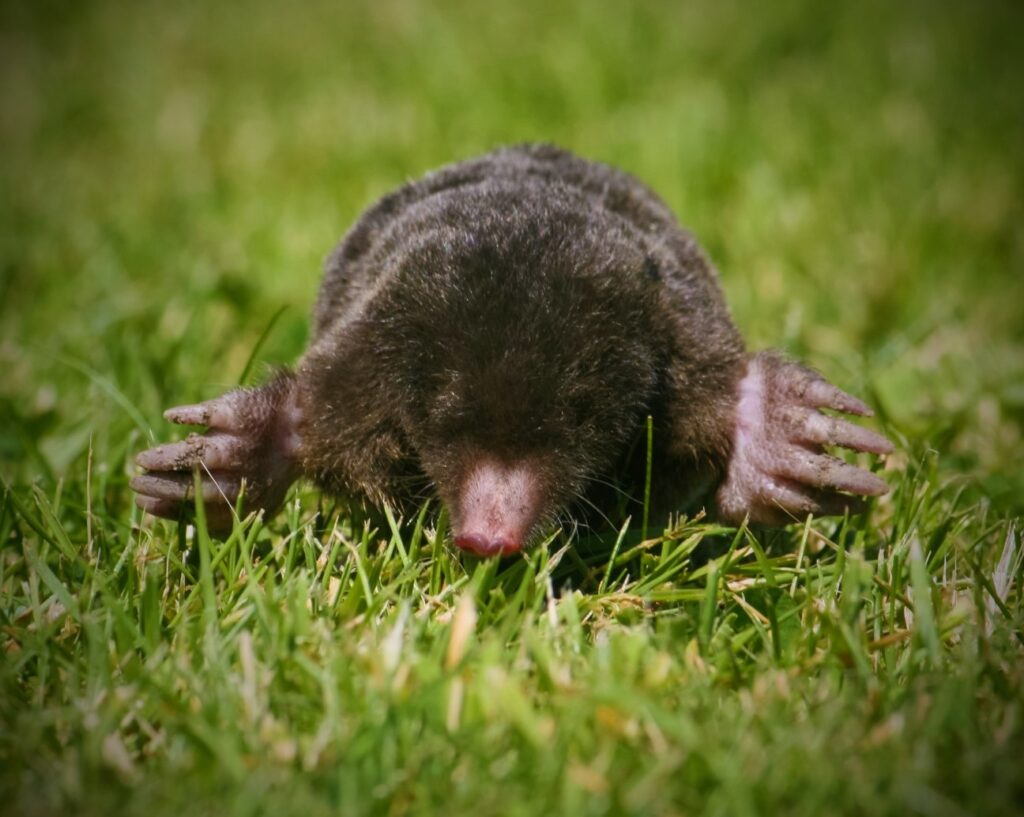 Are Moles Bad To Have In Your Yard?
Are Moles Bad To Have In Your Yard?
You cannot be mistaken to know that a mole has invaded your lawn or garden. You’ll quickly notice multiple piles of soil – mounds that resemble a small volcano where the soil clumps are thrown out through the center and rolled down on all sides.
Moles, the extraordinary small mammals, spend half of their lives underground searching for food, beneath those annoying mounds of soil. In nature, they are woodland animals but can quickly take over and spread through adjacent lawns in residential properties. And the longer you allow moles to tunnel in your yard, the more difficult they become to control.
Although it’s not very likely to see them above ground, the hills and tunnels a mole leaves behind can be real eyesores in your yard. Not only will the molehills look like an unsightly lawn mess, but will also devastate your landscaping. The hills, however, are just a by-product of the animal’s industrious digging. The tunnels can do major damage to your lawn.
Mole burrowing activity varies throughout the seasons. The lawn damage is usually most noticeable during spring and early summer, but also in the fall. This is when moles are most active and are closest to the surface. In summer, the damage usually subsides when the soil dries out and moles excavate mostly at a deeper level.
Luckily, a mole is mostly a solitary, unsocial, and highly territorial animal, so if you eliminate one mole, most likely there isn’t another one nearby. If you find an elaborate sequence of tunnels, it probably is just one mole that is a very active builder. However, new moles can move into existing, abandoned tunnels within 24 hours.
How Long Will Moles Live in the Yard?
In general, moles have small home ranges and the animal will rarely stay in the same area for a longer period of time. Their activity in a particular area may only last one or two weeks until there’s no more food to be found. So, once all the local soil insects have been eaten, the mole will move on to a better hunting ground.
Are Moles Bad To Have in Your Yard?
Despite the damage that moles cause to a yard, they are not that bad. In fact, they are mostly good, bringing lots of benefits to your lawn.
In terms of damage done to your yard, moles are usually blamed for eating bulbs and the roots of ornamental plants. Although they can cause havoc with their burrowing and mounding, moles do not gorge on homegrown produce.
In fact, voles, chipmunks, and mice are the real culprits. Mole runways can be used by rodents that feed on bulbs, seeds, and roots, and these rodents will cause direct damage to your lawn, garden, or fruit orchard.
What Do Moles Eat?
Moles are insect eaters. Their diet consists primarily of earthworms, but grubs, beetles, snails, slugs, spiders, centipedes, and other bugs are also on the menu. On average, a mole consumes 40 pounds of insects per year. The mole’s main food source are earthworms, and the animal will eat about six big worms every day.
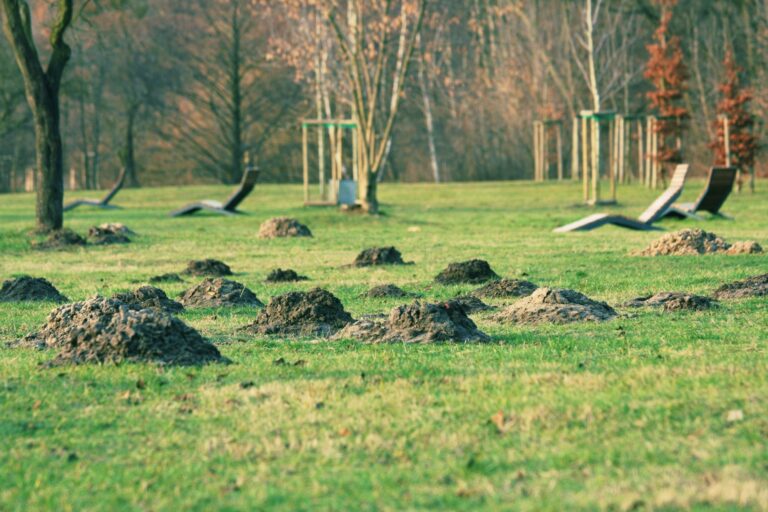
Do Moles Damage Your Yard?
Without a doubt, moles can locally be destructive.
They push mounds of soil to the surface and their tunnels create holes and weak spots in the lawn. The burrowing results in lines of raised ridges in the ground and ugly-looking mounds of soil.
They create easily noticeable trails of dead grass throughout the yard. When moles burrow close to the surface, it can cause harm to grass roots, leaving behind brown patches.
While tunneling for insects, moles can disrupt the roots of vegetables and other plants, and uproot turf. Their shallow tunnels will lift the soil and allow plant roots to dry out. Their digging through root systems of plants can kill the seedlings and expose bulbs and roots to the surface.
Their runways provide underground routes for other rodents searching for food. Their tunnels may suit other pests that will go after plant roots.
The molehills can be dangerous to walk over and might result in trips and falls. Mole burrowing activity will create holes in the lawn and a tunnel can easily cave in when accidentally stepped on, which might lead to your injury.
Benefits of Moles in Yard
On the other hand, we must not forget that moles are great contributors to the ecosystem.
If you have moles in your yard, it means you have healthy, rich soil, as these animals will feed on any earthworms and pest insect larvae found in the soil.
Moles will also eat grubs that are harmful because they destroy grass roots, and also beetles that feed on decorative plants. They effectively eliminate ants, snails, and termites.
Moles are known as natural aerators. They dig underground tunnels which loosen soil and form channels for air and water to move freely through the soil, which helps plant growth. Thus, mole tunnels promote the health of the soil by turning, aerating, and draining it, and fertilizing and mixing its nutrients.
To Conclude,
Trapping moles can be labor-intensive even if there’s just one mole to catch. There is no one-time solution to control moles, it is a process that requires continuous maintenance.
So if you’re not willing to battle the moles by yourself, your best bet is to hire an experienced exterminator in your area. You’ll want someone who can provide expert advice and can create a mole removal strategy that is effective and humane.
Give Westchester Wildlife an opportunity to prove what a professional mole control company can do for you. And all you’ll have to do is relax and let us deal with your mole problem.
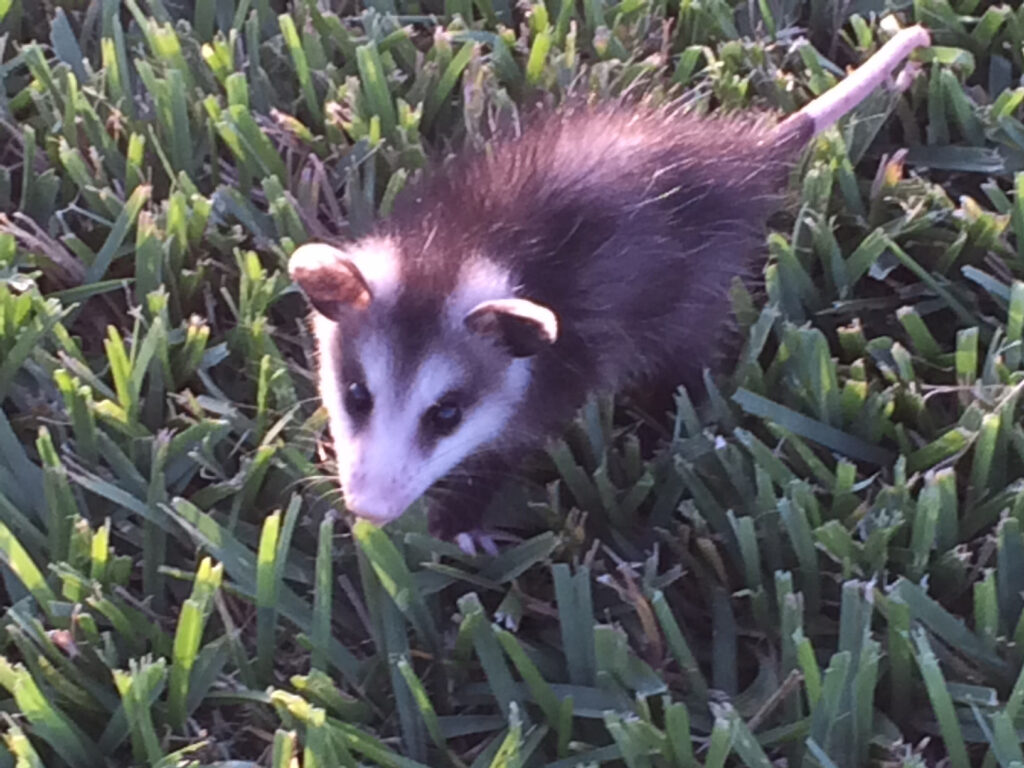 What Attracts Opossums to Your Yard?
What Attracts Opossums to Your Yard?
Opossums are nocturnal marsupial species that mostly dwell in North America. Being related to kangaroos, opossums behave like them since they have an outside porch for developing young ones.
These animals are omnivores and therefore, feed on almost everything edible. However, they can be so hectic in neighborhoods because they like foraging through trash cans.
Regardless of their adaptability, these animals are slow runners and have poor eyesight. While active, possums can cause a lot of disturbance to pets and make a lot of noise while foraging through garbage cans. But, what attracts them to a yard?
They are attracted to your yard whenever food is plentiful, so leaving food scraps in your garbage will definitely keep them around. In most cases, these animals get attracted by odorous and overflowing garbage cans, any containers left outdoors, or uncovered compost heaps. Since opossums are scavengers, they can feed on anything they find.
They like moist areas, that is why they prefer inhabiting near water areas. Yards near a sewer, a drainage ditch, or a pond are likely to attract even more of these animals.
What Kinds of Food Attract Opossums?
Opossums are opportunists and they want mainly what is easy to find and eat. Since they have a lot of teeth, they are able to feed on various food sources, including fish, insects, birds, vegetables, garbage, crustaceans, rodents, dead animals, snakes, mushrooms, eggs with shells, grass, and all kinds of fruit.
The primary substance source of food includes rodents, worms, frogs, snails, and slugs. Additionally, these animals will feed on birdseed, nuts, berries, and even dry and canned cat and food.
Which Foods Do Opossums Like to Eat in Particular?
As opossums are not choosy, they like to feed on almost anything, even carrion. They will not turn their nose up at various plants, vegetables, tree fruits, meat and bone scraps exclusively.
However, possums need high amounts of calcium in their diet and this explains why they love eating skeletal remains of road kills and rodents. Also, if sweet potatoes and yams, which are rich in nutrients, are available, opossums will love eating them.
Moreover, possums enjoy feeding on sweet things, and particularly on marshmallows and peanut butter.
What Smells Attract Possums?
There are some smells that opossums find very inviting. They often get attracted to cinnamon scents, so if you have such scents lingering in your yard, be ready to receive these animals to your property. This explains why most people who wish to eliminate them from their yards use these scents to lure possums to baits.
Is It Bad to Have Possums in Your Yard?
Most people believe that opossums are nasty and dirty animals, which might pose a dangerous risk to their lives. In fact, it is not true.
Opossums are gentle and clean animals. They prefer not to fight, they may growl, hit, or even in some rare cases, bite, but they are peaceful animals. Opossums can choose to play dead or faint if you confront them, thus, they might not harm you. Therefore possums are beneficial animals that provide much value.
As already mentioned, opossums will feed on almost everything they can find on your property, they forage through garbage, eat the waste, dead carcasses, and even pests. Due to this, they help clean the yard and keep it free from dangerous pests and subsequent problems.
However, some people believe that these creatures are unclean and cause disease, which is somehow contrary.
Opossums are scavengers who help balance the ecosystem by cleaning up the area as they feed on a variety of pests that are found in yards, such as small rodents, beetles, snakes, cockroaches, snails, or slugs. Thus, they are a natural pest control method.
Opossums help fight against Lyme disease in your household. Even though they can also get bitten by ticks and get infected with Lyme disease, these animals are exceptional at finding and eliminating ticks. Scientists claim that opossums are natural vacuum cleaners for ticks as they are able to consume 5,000 ticks in a season and even more if ticks are plentiful.
Besides killing ticks, opossums can help cure snake bites. These animals feed on snakes, including the poisonous species, and have become immune to the snake poison. Scientists use the peptide found in possums, thus providing cheap snake antivenom treatments.
In Summary,
Opossums are North American natives who live and roam through the garbage in both urban and suburban settings. They feed on a variety of unpleasant things such as debris, vegetables, birds, and more. Since they eat vegetables and fruits, they might destroy fruit and vegetable gardens.
If you are in need of eliminating a possum from your yard, contact Westchester Wildlife today. We will humanely trap and remove the opossum from your property, and then relocate it to a safe place where it is able to thrive.
However, despite being such a nuisance, the animals come along with a lot of benefits. So don’t forget about the environmental benefits they bring before you send them away.
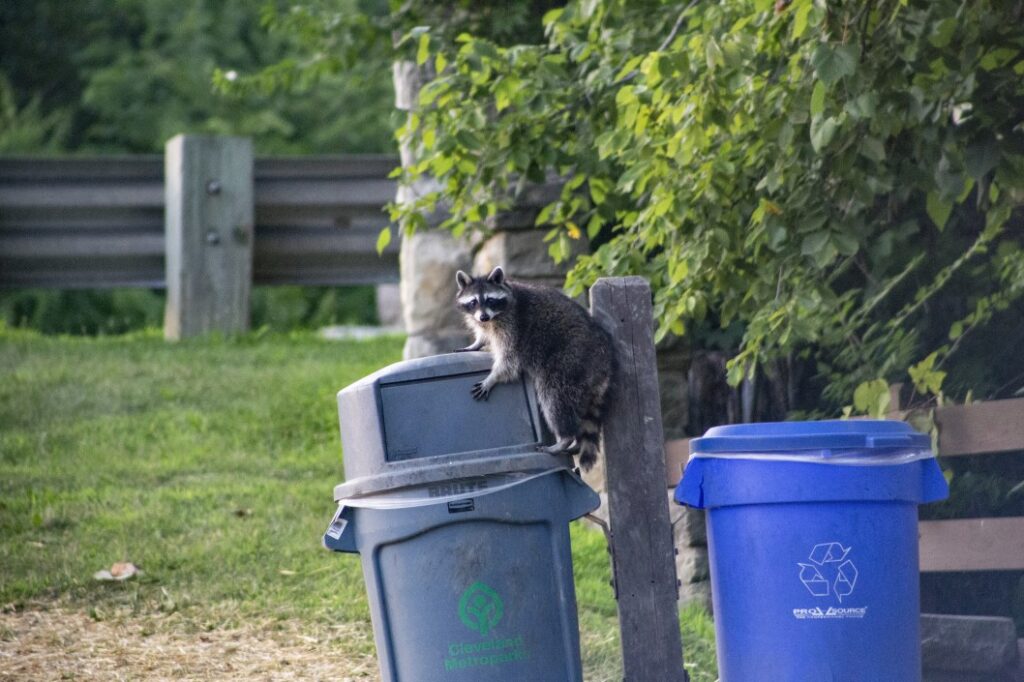 Why Do Raccoons Eat My Garbage?
Why Do Raccoons Eat My Garbage?
Urban raccoons are on the rise and currently, they are forced to coexist with humans. You might view raccoons as adorable animals with small cute faces but don’t be fooled by their appearance. When they are hungry, they can rummage through the trash in your yard and leave a mess in your garbage bins.
So, do you wonder why raccoons raid your trash cans and scavenge through your garbage? This article will answer that.
Do Raccoons Eat Garbage and Why?
When not in the wild, raccoons will eat garbage that humans leave outside. But why do they eat trash? The simplest answer to this is because they have no choice. In an urban setting, your trash can is the easiest place they can get food.
Raccoons are also lazy, there is no doubt about it and the closer and more accessible food is to them, the better. Now that garbage bins and trash cans are available in abundance, especially in urban places, they make their lives so much easier.
Can Raccoons Get into Garbage Cans?
Raccoons are agile and can open garbage cans and bins easily and quickly scavenge the food in there. What’s more, they are also known as the expert garbage divers, they can climb, or jump up, and they will do anything to access food in a bin or can.
If they are unable to jump in, they can even knock over garbage cans for food. When they finally make it into your garbage can, they will dig through the items in there in search of food scraps. Garbage cans are also the unconventional places where they can get a wide variety of foods.
What Do Raccoons Like to Eat the Most in the Trash?
Raccoons are opportunistic eaters and will scavenge on pretty any kind of food found in your trash. They are omnivores and love eating meat scraps and freshly disposed of veggies. They are particularly fond of eating grapes. In addition, these wild animals have also been spotted eating a wide variety of fruits like melons or berries, sweetcorn, bread, and eggs.
Despite their scavenging nature, raccoons will try to avoid rotten food unless they have no other place to get food. Since getting the same garbage can food is hard in the world, they would rather spend the whole day knocking over garbage cans or jumping from your garbage can to your neighbor’s.
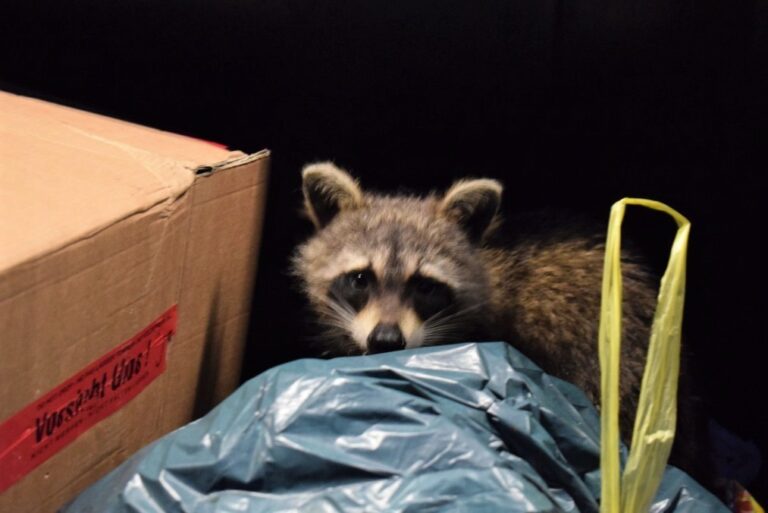
Why Don’t Raccoons Easily Get Sick on Eating Garbage?
It’s hard for a raccoon to get sick because of eating garbage foods, and there are reasons for that.
First, they have long intestinal tracts. This means that they are able to get rid of most of the toxins in the garbage food during the digestion process. Secondly, their stomach is highly acidic and will kill most of the harmful bacteria before they have a chance to work on them.
Lastly, most raccoons have evolved to know what foods can be harmful to them. They will avoid such foods in most cases and with this, they will hardly get sick.
What Foods in the Trash Are Toxic to Raccoons?
Even with these evolutions and resistance, there are some foods containing bacteria that are toxic to raccoons and can make them sick. Most of these bacteria will be present in rotten foods that they try as much to avoid.
Common toxic food to raccoons include nuts like macadamia, chocolate, and raisins. Onions and garlic are also known to cause anemia in raccoons. Thus, you should be careful what you are tossing in the trash as some items might be toxic to this wildlife. Luckily, there is no toxic agent that will wipe out the entire raccoon population.
Do Raccoons Carry Diseases?
Raccoons can carry and transmit a few illnesses to humans, the common one being a virulent strain of rabies. Their furry body can also carry infected ticks, lice, and fleas. Due to this, you should avoid engaging and cornering them but instead make loud noises from afar; this is often enough to scare them off.
However, if raccoons are a nuisance on your property, you can always reach out to a local wildlife control specialist for further guidance on how to deal with them.
Hopefully, now you understand why garbage food is so desirable to raccoons and why they are a common sight in areas with trashed food matter. In case you don’t want them making a mess in your garbage cans, you can always secure them with rubber bungee cords.
Also, it is best to contact our Westchester Wildlife team in your area for help on the humane removal of raccoons from your home if they make it their favorable eating spot.
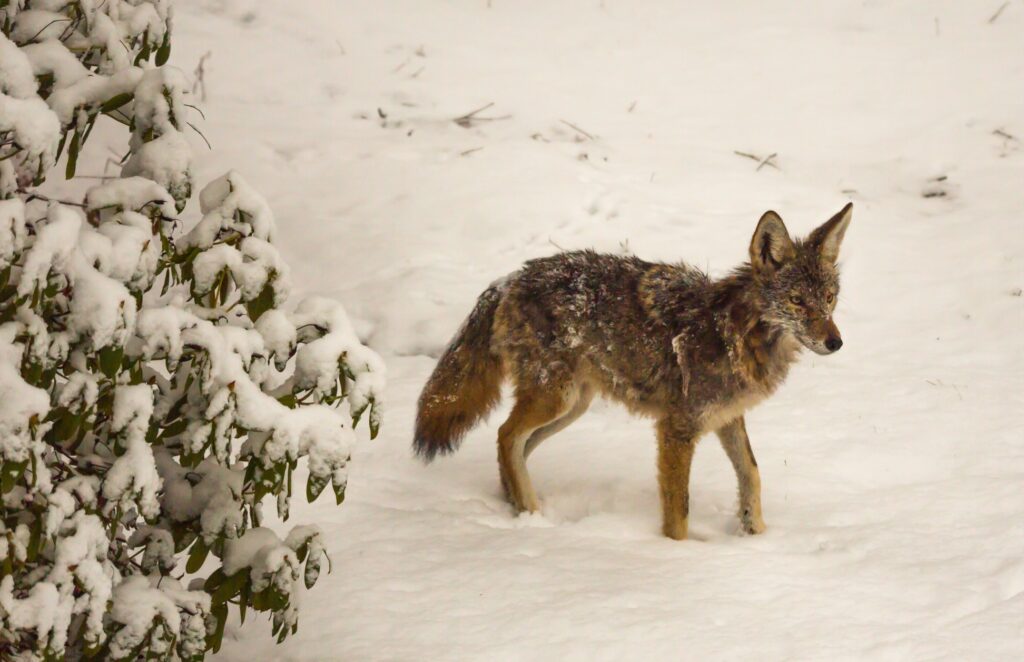 When Are Coyotes Most Active and Aggressive?
When Are Coyotes Most Active and Aggressive?
Coyotes have often been depicted as cunning, sly characters that are untrustworthy. Unfortunately, public perception of these wild animals has not changed much with the connotations of coyotes remaining largely negative. But is it justified?
Coyotes are a species of canine native to the United States where they naturally inhabit the vast areas of deserts, mountains, and forests. However, due to increased human expansion into their native habitats, coyotes have had to learn how to navigate these new suburban terrains. They are intelligent animals that know how to adapt to different environments with ease and skill. It has become common to spot coyotes in major cities, even being seen in New York City.
Unlike their close relatives, the wolf, coyotes are solitary animals but when hunting large prey, such as deer, they can choose to work as a pack. Coyotes are nocturnal animals (meaning they sleep in the day and are most active at night) that come out to hunt at night. Though, it is not uncommon to see them scavenging for food during daylight hours.
Are Coyotes More Active in Winter?
As winter closes in, coyotes become more active during the day in their search for food. They will also travel together more in the winter than they do in the summer months.
Despite what you would assume, coyotes are not purely carnivores but rather omnivores with 10% of their diet being made up from non-meat sources. They are unfussy animals that will happily eat a variety of things such as fish, frogs, rodents, and larger prey like deer. Snakes, grass, fruit, and insects are also on the menu.
However, when food sources are scarce, coyotes will happily turn to scavenging for any source of food in suburban and urban areas of cities and in small towns. They are known to get into garbage and dig in trash cans to pull out any leftovers.
What Month Do Coyotes Mate and Have Pups?
Coyotes start mating from mid-January. The breeding season for coyotes is in the spring months, peaking in late February and early March. The gestation period is 58 to 63 days on average. Spring marks the start for females to begin preparing their dens for new pups. A mom coyote awaits her pups to be born somewhere between mid-March to mid-May.
Are Coyotes More Dangerous During Their Mating Season?
Coyotes can become more dangerous during their breeding season as the males will want to protect their territory from other males. Also, female coyotes will protect their pups and make sure they are not seen by any predators, thus they can get dangerous in some circumstances.
During this time of year, coyotes will pose a major risk to smaller pets, and the risk increases even more during their mating season.
When Are Coyotes Most Aggressive?
As coyotes populations continue to expand at a steady rate, human encounters have become more frequent. Even with this, attacks on humans are rare and highly unlikely.
Like most wild animals, coyotes have no desire for conflict with humans. They would prefer to avoid us and get on with their lives interruption-free. They are of very little risk to you or your family if the right precautions are put in place. But coyotes are more of a risk to family pets than humans.
There are a few simple ways to avoid conflict with coyotes. Firstly, do not under any circumstances feed them. This leads to overconfidence in these animals as they lose their natural fear of humans. Even leaving garbage and pet food where coyotes can have easy access is considered feeding.
Next is to fence your yard and ensure that your pets are not roaming loose. While coyotes can jump fences, if they are built high enough they will deter the predators.
Final Words,
More and more coyotes have been observed living in developed areas and often, people are unknowingly in close contact with them each day. These wild animals are watching and learning from humans who influence their behavior. Coyotes also play a vital role in the ecosystem by providing a great deal of rodent control, and if we respect them, they will do the same in return.
One option that might be used as a compromise in lessening coyote conflicts with humans is to humanely trap them and then relocate them to a distant site.
If you need help to deter coyotes from your property, contact Westchester Wildlife. We are an experienced wildlife control company serving Westchester, Dutchess, Putnam Counties, NY, and Fairfield County, CT.
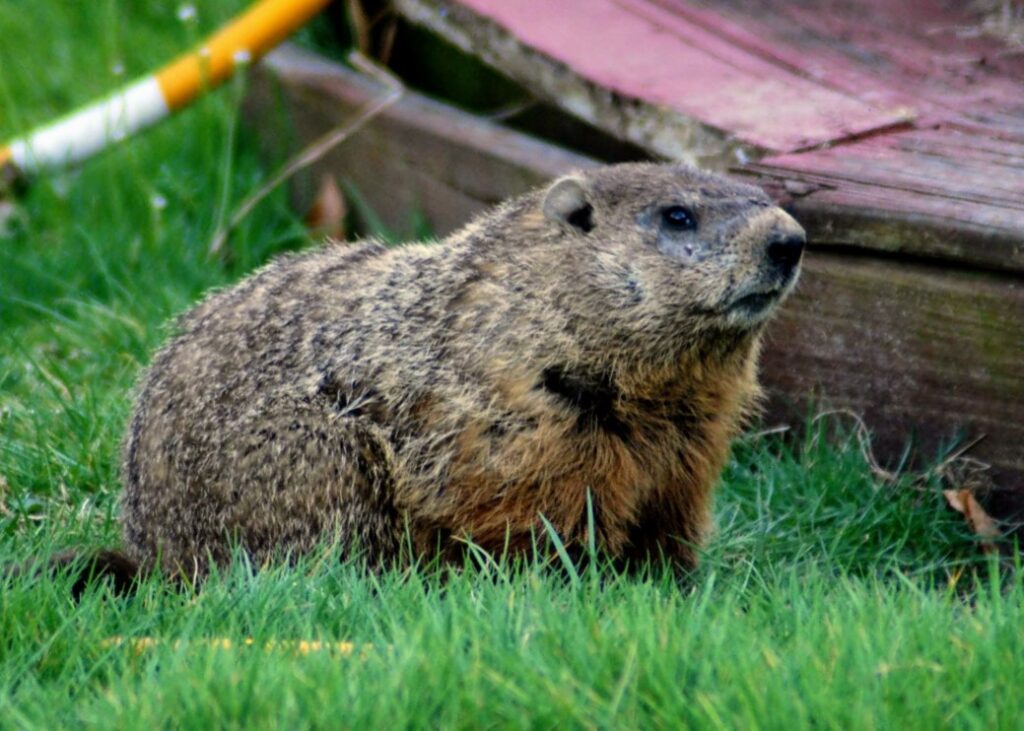 Do Groundhogs Burrow Under a House and Can They Damage It?
Do Groundhogs Burrow Under a House and Can They Damage It?
Groundhogs, also known as woodchucks, are a large species of rodents. These wild animals are only found in North America, and can live as far south as Alabama and have lived as far north as Alaska.
They are referred to as “edge dwellers” and prefer to live in areas such as woodlands and forests in winter and fall, and in open fields, grasslands, and suburban backyards in summer and spring. It is rare that a groundhog will move more than 0.5 miles from its burrow.
However, as urbanization is affecting the natural habitats of wildlife, including groundhogs, these animals made our towns and cities their home. They are getting more adapted to urban settings, are less and less frightened of humans and keep burrowing even when humans are around.
Do Groundhogs Live in the Ground?
As the name would suggest, groundhogs live inside the ground. Their holes lead to the underground burrows that they call home. This is where they spend most of their time. Groundhogs use these tunnels as a place to stay safe from predators, and as an ideal place for hibernation and raising their kits.
Are Groundhogs Problematic?
Just like other rodents, the groundhog’s teeth never stop growing. Their two chisel-shaped, long incisors can grow up to 1/16th of an inch per week. To keep these teeth at a reasonable length, groundhogs need to consume a large volume of food to wear their teeth down.
However, this isn’t usually the main problem for homeowners. The primary nuisance concern in regards to groundhogs involves their tendency to dig.
Groundhogs have muscular bodies, powerful short legs, and sharp claws which enables them to dig deep burrows. They accomplish building their burrows extremely well, and this is why they are sometimes called the “underground architects”.
If you want to learn more about what exactly attracts groundhogs to your yard and what damage they can cause, check out our blog post.
What Do Groundhog Holes Look Like?
All groundhog burrows are laid out in practically the same way. Typically, these burrows will have one and sometimes two main entrances with up to six exits. These entrances look like large crescent-shaped mounds of excavated soil and dirt that’s placed right outside the entrance hole. A groundhog hole will appear roughly ten to twelve inches in diameter. The burrow also has one up to four secondary entrances.
The burrows can reach up to 50 feet in length but tend to be no deeper than 6 feet. When a groundhog starts building its burrow, it digs inward for several feet, and then it inclines the tunnel upward for a few more feet. After that, it will continue digging horizontally for another 15 to 25 feet.
These burrows are extensive, with numerous chambers used separately as a latrine as well as for sleeping, hibernating, and nesting.
Can Groundhogs Damage Your Property?
Groundhogs are definitely something that homeowners need to worry about. Their tunneling systems might lead to significant damage to your property.
These animals are able to dig and move a great amount of dirt, and when this activity happens near a house structure, for example under a concrete deck or a patio, the absence of supporting dirt might cause a vulnerable foundation that is prone to cracking.
They feel safe building homes under or around houses as the structure provides overhead stability for them. However, due to the tunneling nature of groundhog burrows, water damage and erosion can become a serious issue for the homeowner.
With rainy weather, these tunnels can fill with water and lead to water flowing directly underneath the house. This can lead to issues with the foundation, i.e. disruption of the existing water balance, and drainage problems during severe weather conditions.
You may find increased moisture in the basement which can, in turn, lead to mold developing throughout the building. The water-logged tunnels can cause the soil to become eroded, which may lead to the entire failure of the house’s foundation.
Due to their powerful teeth and big appetites, groundhogs can also do damage to crops and plants in your garden. For this reason, you may want to get rid of this wildlife before your garden gets destroyed.
Final Words,
Fortunately, there are ways that a homeowner can deter groundhogs from their property. The only thing that’s effective is to humanly trap and release the wildlife further away. DIY groundhog control methods are proven to not be working most of the time. Thus, your best option is to hire an experienced wildlife control company.
Contact Westchester Wildlife for more information on humane trapping and removal of groundhogs from your property. We offer our services in Westchester, Dutchess, Putnam Counties, NY, and in Fairfield County, CT.
Rattlesnake
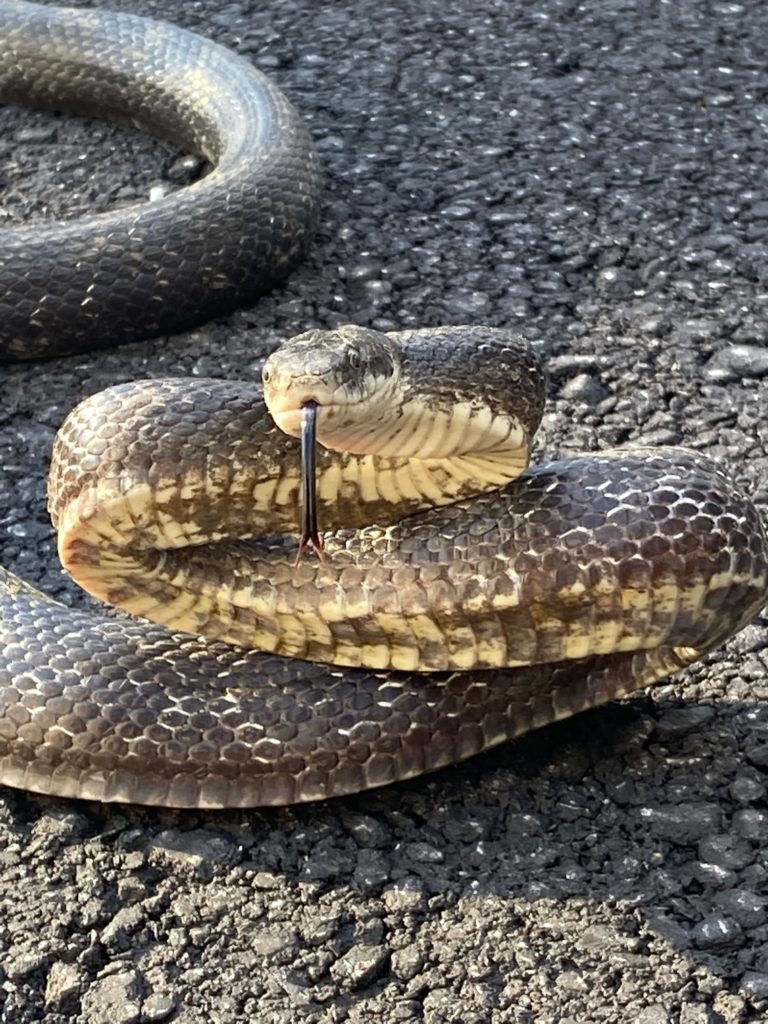
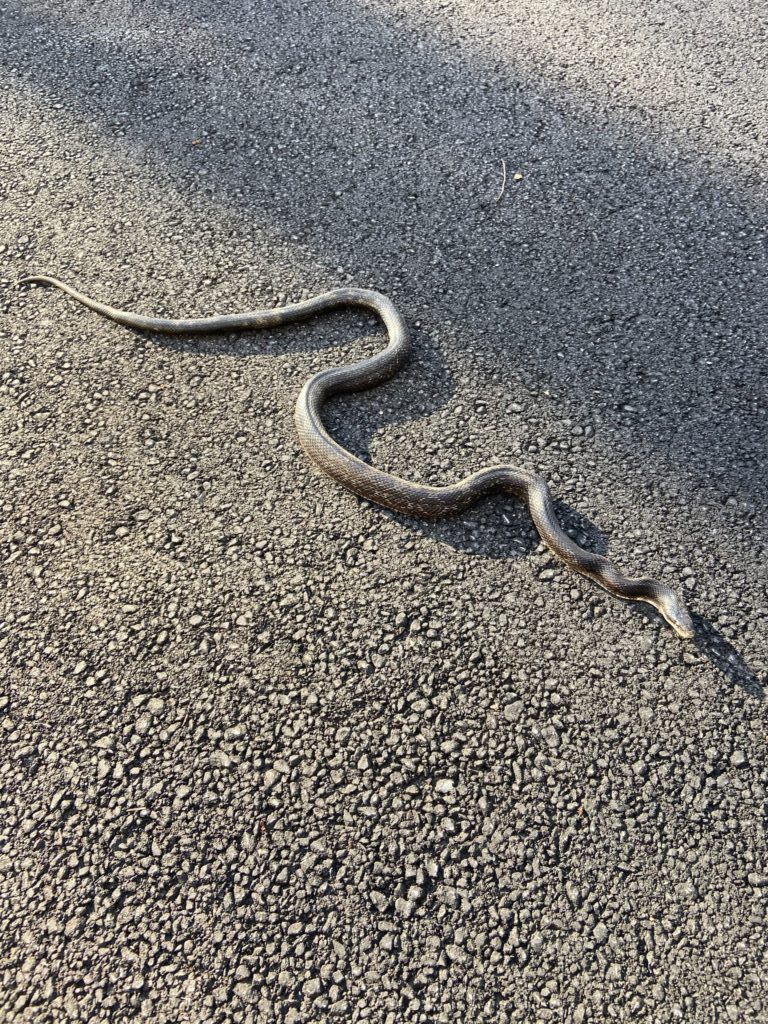
Ok, this is definitely not something you want too close to you! These pictures were taken by Westchester Wildlife LLC during a Rattlesnake removal.
Rattlesnakes are poisonous and considered very dangerous. If you notice one getting too comfortable around your home, Westchester Wildlife LLC has the experience to remove these snakes with ease.
Honey Bee Removal
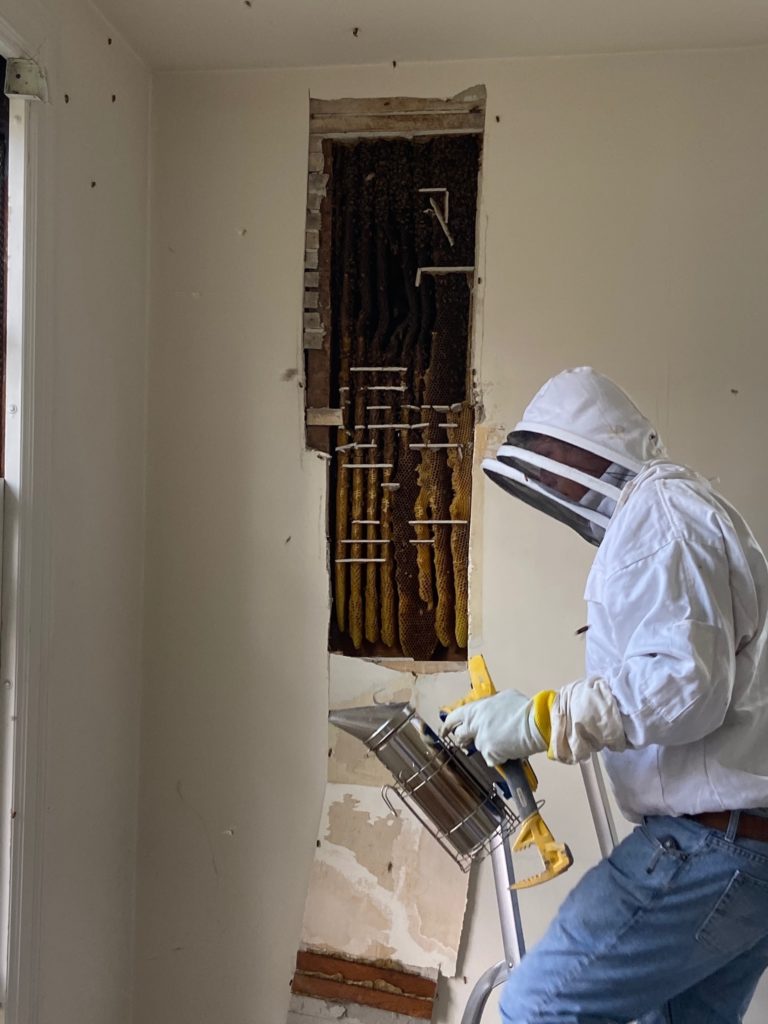
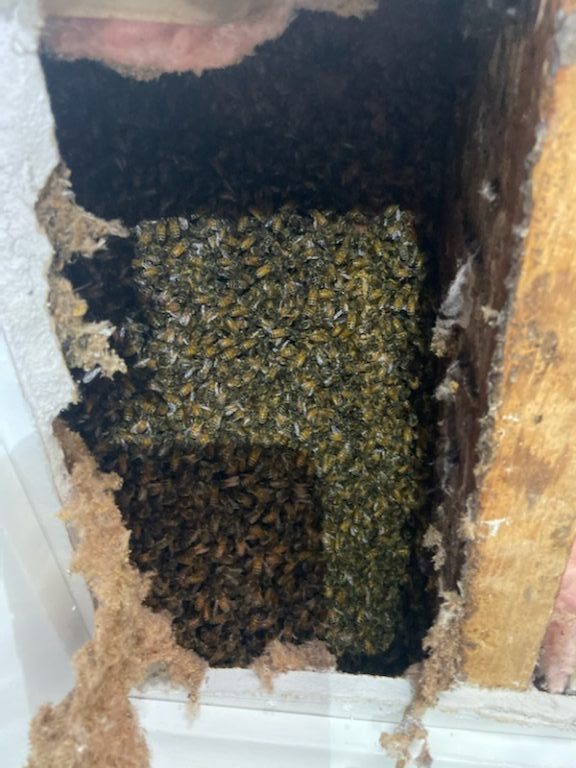
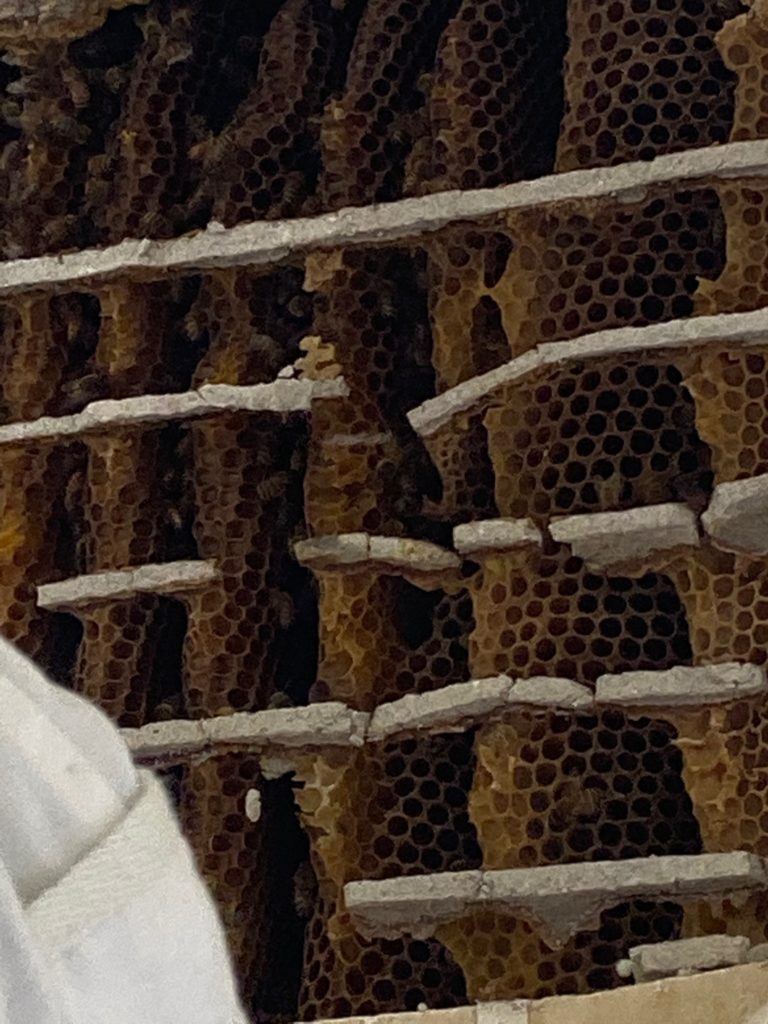
Honey bees are an incredible insect. Being a favorite of ours, Jim Dreisacker has kept honey bees and extracted honey for health food stores and local markets long before it became another pest for Westchester Wildlife LLC to remove.
They are are better kept outside of your home, of course but when bees are desperate they find a way to make your wall a suitable hive! (See photos)
As a protected species and a very important insect for our environment, we use a special vacuum to remove and relocate the bees safely.
Eastern Mole
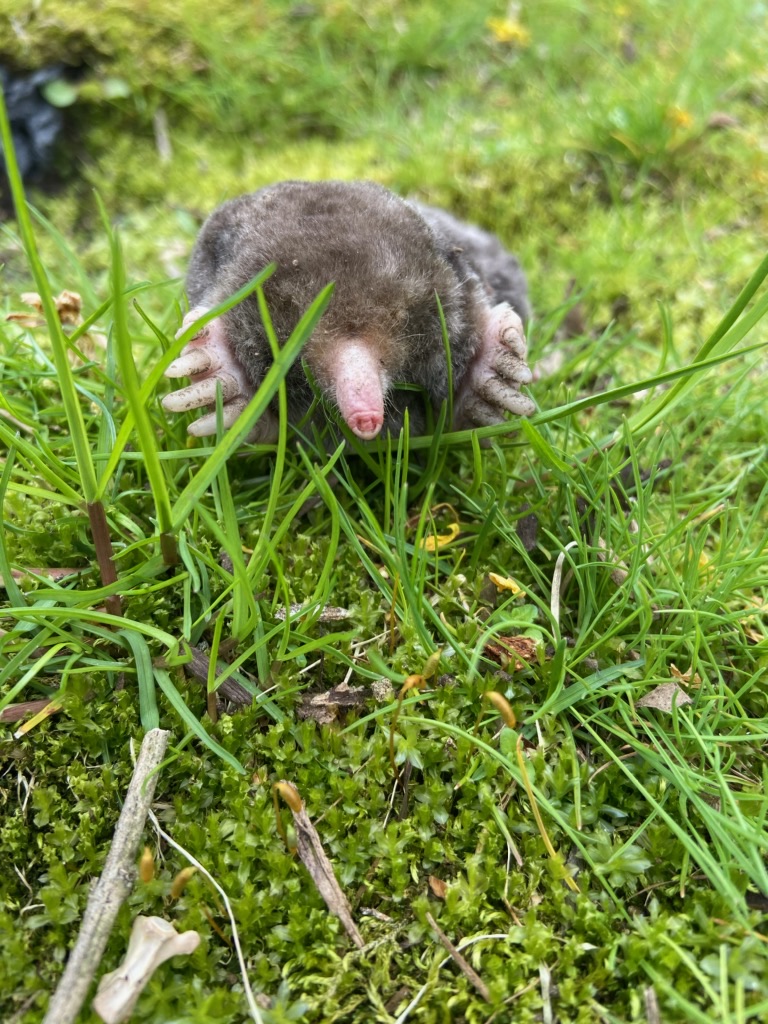
While you may never see these critters, you will most likely recognize their work.
Moles dig small tunnels underground that gently push up the grass above ground. Your shoe may sink in to one of these soft spots before you notice they’ve dug tunnels across the entire lawn.
One mole can tunnel an average of 20 yards per day. Each mole measures approximately 6 inches in length, they are a rather small mammal. They have very limited vision and hearing and are equipped with claws great for digging and a heightened sense of smell to guide them underground.
Groundhog or Woodchuck?
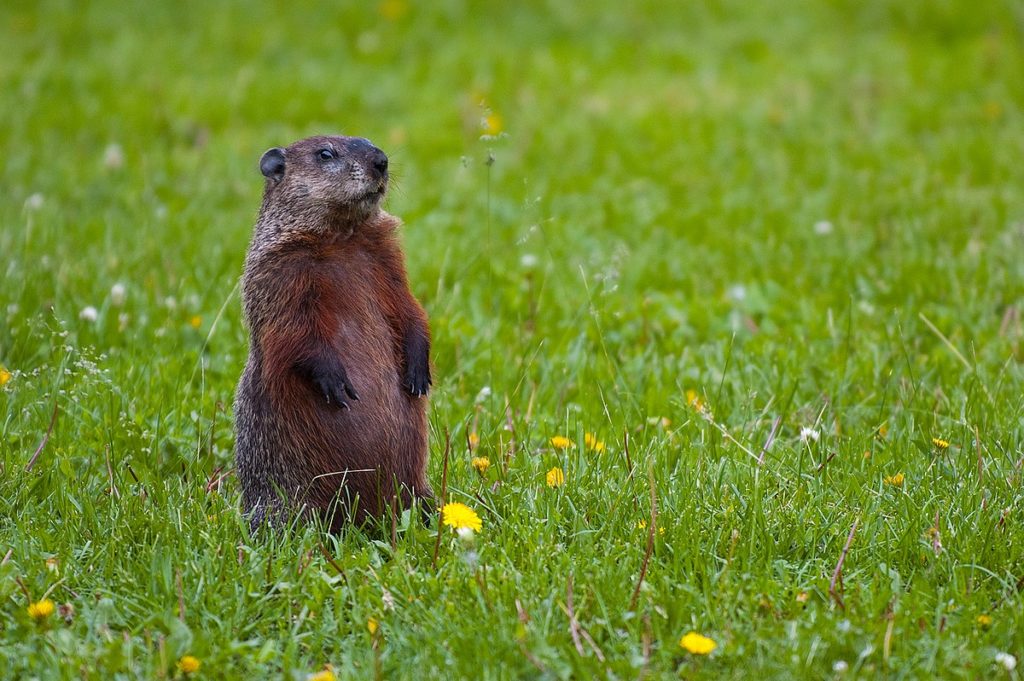
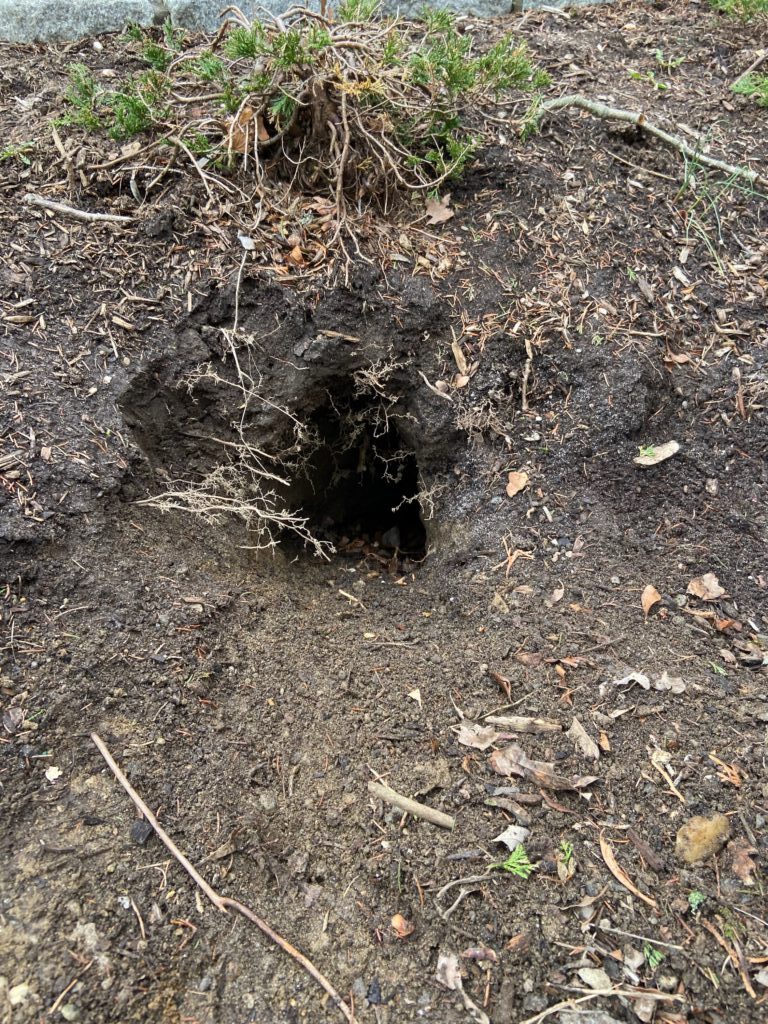
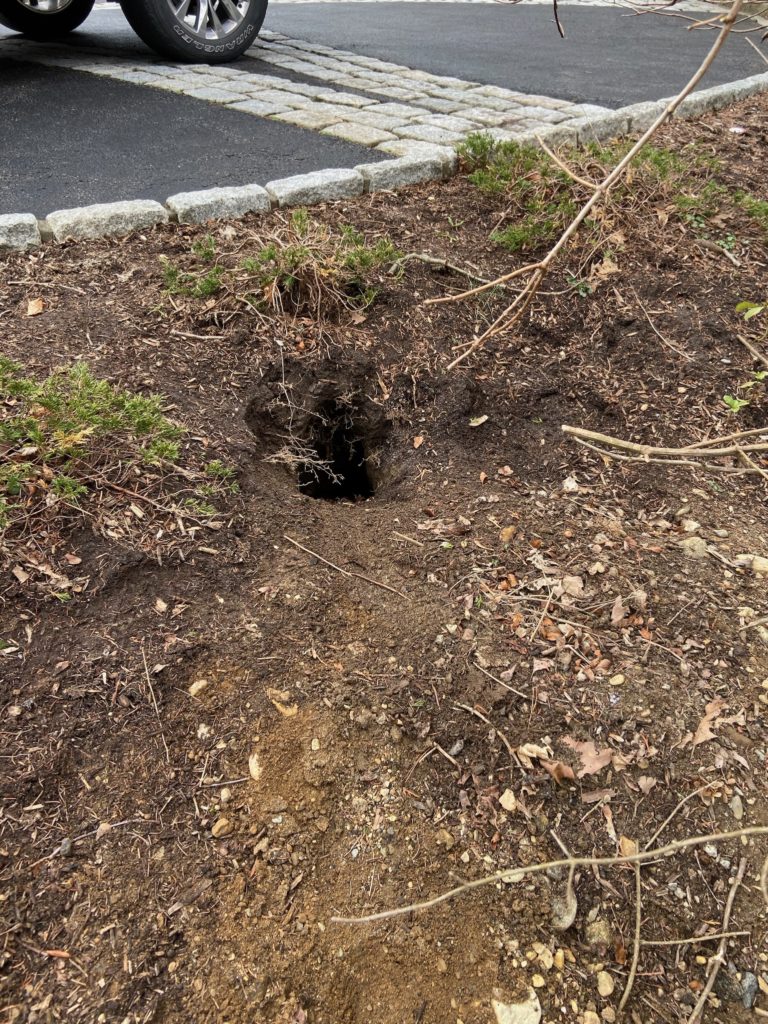
Finally got a peak of who has been digging holes in your lawn? It seems the mid sized rodent is a “groundhog” according to your google search, but your husbands search landed him on “woodchuck.” They look identical. Well, which is it?!
Both are correct. This mid sized rodent is a part of the marmot family and has gone by several names such as “groundhog”, “woodchuck”, “whistle pig” and even “land beaver.”
They have gained popularity in North America as we have trusted them with the projection of a long winter or early spring, depending on if they are willing to come out of hibernation: “Groundhog Day.”
There are 15 species of Marmot according to their region of either North America, Europe or Asia. While I can’t say how many other nicknames they have acquired across the world, you would be safe to refer to them as any of the above listed names when calling Westchester Wildlife LLC.
 Are Moles Bad To Have In Your Yard?
Are Moles Bad To Have In Your Yard?















